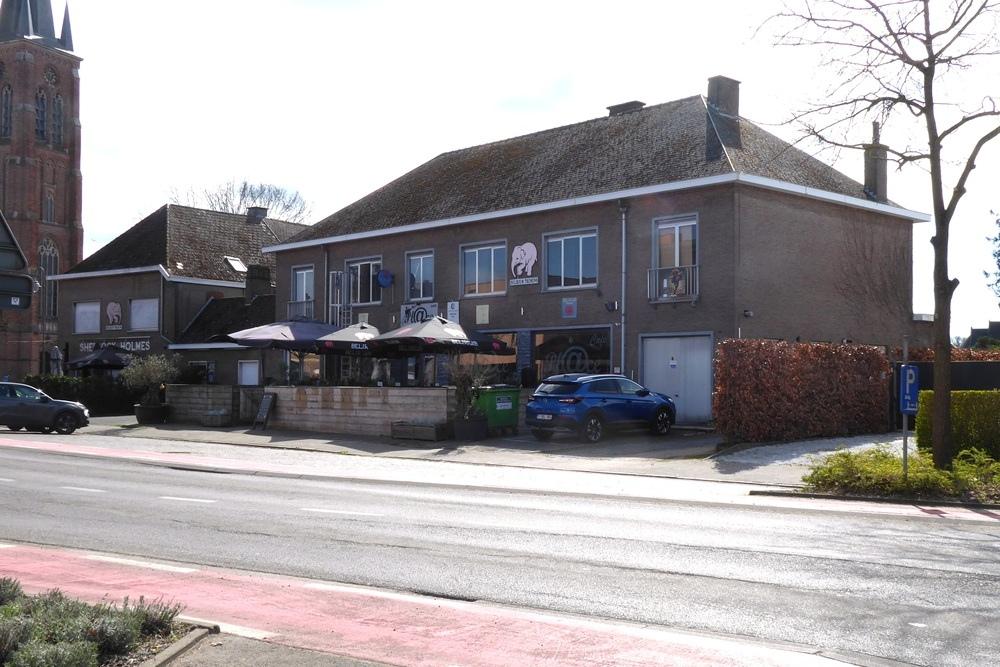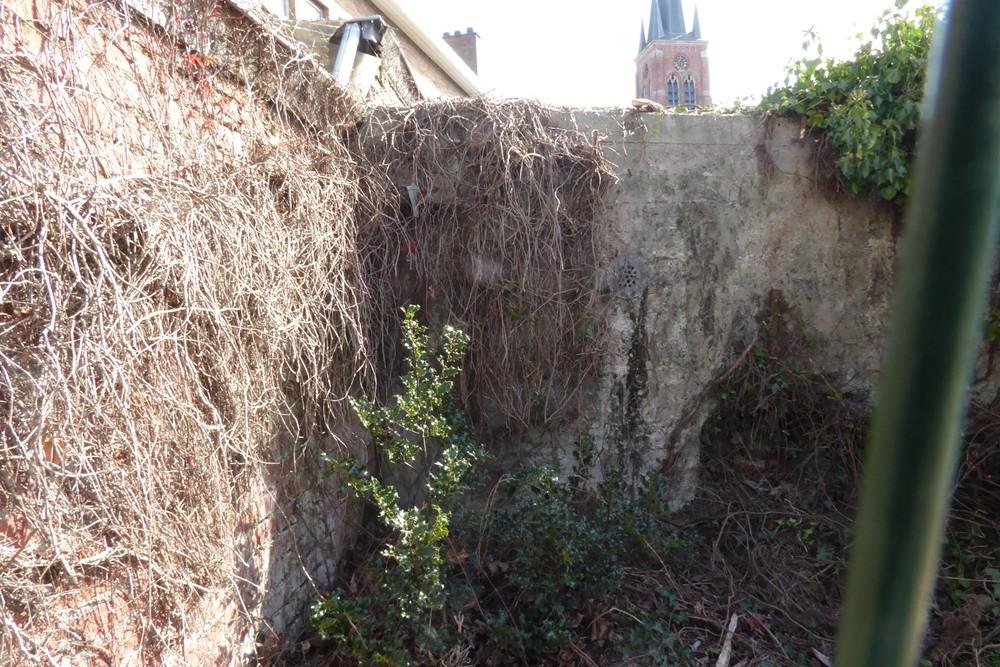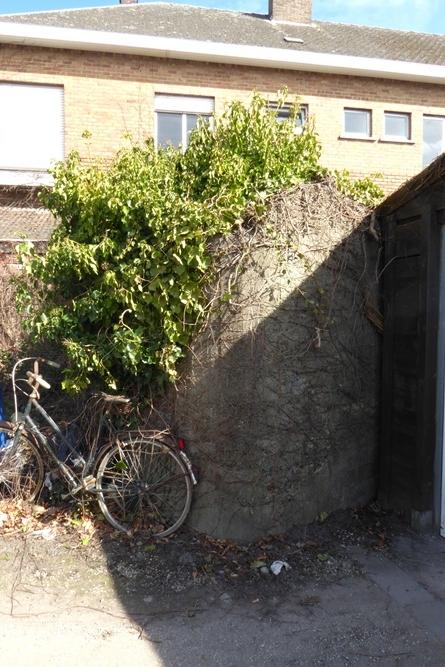Bunker Belt Bruggenhoofd Gent – Rear Line Bunker E10
Belgian bunker, part of the Ghent Bridgehead. This defensive position was constructed between 1934 and 1938, eight kilometres south of Ghent. Its construction was part of the fortification policy that Belgium pursued after the First World War.
The actual bridgehead consisted of two resistance nests – Betsberg and Muntekouter – and three strong points – Semmerzake, Eke and Astene.
The resistance nests and strong points were connected to each other by a curtain consisting of three defence lines.
There were 21 bunkers on the territory of Eke. Of these, 6 have now been demolished and 4 have been dug in. Of the remaining 11, some are on private property and are therefore not accessible.
Bunker E10 is the rightmost rear line bunker of the Eke strongpoint.
It was walled with bricks and had a saddle roof covered with red Boom tiles. It looked like a garden shed.
It contained one room and an airlock. It was equipped as standard for a Maxim machine gun but also had the facilities for the installation of a Hotchkiss or Colt machine gun.
The bunker is not so easy to find nowadays as it is completely enclosed between the buildings in the centre of Eke. It is partly built into the rear building of café Place2be. You can see it to a limited extent if you go via the driveway to the garages.
Extensive information about this bunker belt can be found on the site Bunkergordel Bruggenhoofd Gent. It also contains photos, plans and technical data of the bunkers. A map shows the locations per municipality.
Do you have more information about this location? Inform us!
Source
- Text: TracesOfWar
- Photos: Marie-Christine Vinck
Nearby
Point of interest
Monument
- War Memorial Eke - Eke (Nazareth-De Pinte)
- Memorial Grenadiers Eke - Eke (Nazareth-De Pinte)
- War Memorial Semmerzake - Semmerzake (Gavere)
Cemetery
- Belgian War Grave Eke - Eke (Nazareth-De Pinte)
- Belgian Graves Veterans Eke - Eke (Nazareth-De Pinte)
- Belgian War Graves Semmerzake - Semmerzake (Gavere)
Remembrance Stone
- Stumbling Stone Kortrijksesteenweg 890 - Gent
- Stumbling Stone Fortlaan 93 - Gent
- Stumbling Stone Monterreystraat 63 - Gent









